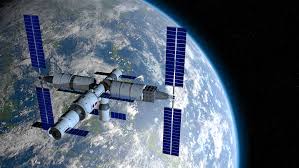Fiji: Beyond the Beaches – A Tropical Tale of Culture, Community & Color
🌴 Introduction: Fiji, Where “Bula” Means More Than Just Hello
Welcome to Fiji — a place where time slows down, smiles are currency, and nature sings in every wave and whisper of the wind. If you’ve ever dreamt of an island paradise, chances are it looked a lot like Fiji. But there’s so much more to this South Pacific jewel than meets the eye.
In this article, we’ll explore the real Fiji — not just the honeymoon brochures and luxury resorts, but the heartbeats, traditions, and tropical truths that make it unforgettable. Whether you're planning a vacation, researching for a blog, or just curious, let’s dive deep into Fiji’s magic — island by island, heart to heart.
📍 Where Is Fiji? A Map Dot Full of Wonders
Fiji is an archipelago made up of 333 islands, about 1,300 miles northeast of New Zealand. Its two largest islands, Viti Levu and Vanua Levu, are home to most of the population.
What makes its geography special?
-
Volcanic Origins: Fiji's dramatic landscapes were shaped by ancient volcanoes.
-
Coral Reefs: Home to some of the most vibrant coral reefs on Earth.
-
Tropical Climate: Expect year-round warmth, gentle sea breezes, and the occasional rain that makes the jungles lush.
If nature had a paintbrush, Fiji is where she showed off.
🧬 A Rich Tapestry of Cultures
Fiji isn't just about natural beauty — it’s also about people and stories.
🌺 Fijians (iTaukei)
The indigenous people of Fiji, known as iTaukei, have a culture rooted in community, storytelling, and ceremonies. Expect to be greeted with “Bula!” — a word that means life, joy, and a warm welcome.
🌱 Indo-Fijians
After the British brought indentured laborers from India in the 1800s, a new cultural chapter began. Indo-Fijians brought spices, Bollywood music, temples, and a beautiful diversity that still thrives today.
🌍 Multicultural Harmony
Fiji is a melting pot where:
-
You might hear Fijian, Hindi, and English all in one conversation.
-
Festivals like Diwali and Hibiscus Festival are celebrated with equal joy.
-
Food fuses flavors from every cultural root — think curry, coconut, cassava, and seafood feasts.
🏝️ Tourism in Fiji: A Dream That Lives Up to the Hype
Fiji isn't just a travel destination — it's an emotion.
✈️ Most Popular Destinations:
-
Nadi – Your likely point of arrival. Temples, shopping, and warm welcomes await.
-
Denarau Island – Upscale resorts, golf courses, and spa retreats.
-
Yasawa and Mamanuca Islands – Picture-perfect turquoise waters and overwater bungalows.
-
Suva – The capital city and cultural soul of Fiji.
🐠 Unforgettable Experiences:
-
Snorkeling & Diving – Swim alongside reef sharks, turtles, and colorful corals.
-
Village Visits – Step into a slower world, where traditions are still sacred.
-
Kava Ceremonies – A mildly sedative drink that brings people together.
-
Lovo Feasts – Food cooked underground, shared with love.
And yes, sunsets in Fiji do look like they were painted by the gods.
🔁 Fiji’s History: From Ancient Waves to Modern Voices
Fiji’s story begins more than 3,000 years ago, when seafarers from Melanesia and Polynesia settled these islands. Since then, it's lived through colonization, independence, coups, and rebirth.
🕰️ Key Historical Moments:
-
1874: Fiji becomes a British colony.
-
1970: Gains independence peacefully.
-
1987–2006: A series of military coups created political instability.
-
Today: A stable democracy with growing global presence, especially in climate advocacy.
Fiji is not perfect — but it's proud, resilient, and always moving forward.
🌱 Green Fiji: Champion of Climate and Conservation
Fiji is on the frontline of climate change — but it's also leading the fight.
♻️ Environmental Commitments:
-
Hosted COP23, the UN Climate Change Conference.
-
Bans on plastic bags and single-use plastics.
-
Community-led reef restoration and sustainable tourism.
Fiji isn’t just preserving its paradise — it’s trying to save the whole planet.
💰 Fiji’s Economy: More Than Just Tourism
Yes, tourism brings in nearly 40% of GDP, but Fiji’s economy is a diverse mix of:
-
Agriculture: Sugarcane, coconuts, ginger, and taro.
-
Fishing: Tuna and fresh seafood exports.
-
Bottled Water: The famous "Fiji Water" is sold worldwide.
-
Gold & Minerals: Small but vital mining industry.
The government continues to invest in renewable energy, digital innovation, and eco-businesses.
✈️ Traveler Tips: Know Before You Go
-
Best time to visit: May to October (dry season)
-
Currency: Fijian Dollar (FJD)
-
Language: English is widely spoken
-
Safety: One of the safest destinations in the Pacific
-
Tipping: Not expected, but appreciated
Pro Tip: Bring reef-safe sunscreen and an open heart.
🎬 Fiji in Pop Culture
-
Cast Away (2000) – Filmed on Monuriki Island.
-
Survivor (multiple seasons) – Hosted on various Fijian islands.
-
Fiji Water – Even celebrities can’t get enough of it.
This isn’t just a tropical escape — it’s a setting fit for Hollywood.
💖 Why Fiji Steals Your Heart
Fiji isn’t loud. It doesn’t shout to be noticed. It whispers — through rustling palms, quiet smiles, and songs sung by firelight.
What makes Fiji unforgettable isn’t just the sunsets or the sea. It’s the feeling. The spirit. The people.
Whether you’re sipping coconut water under a palm tree or laughing with locals over a shared meal, Fiji feels like home, even if it’s your first time there.


































